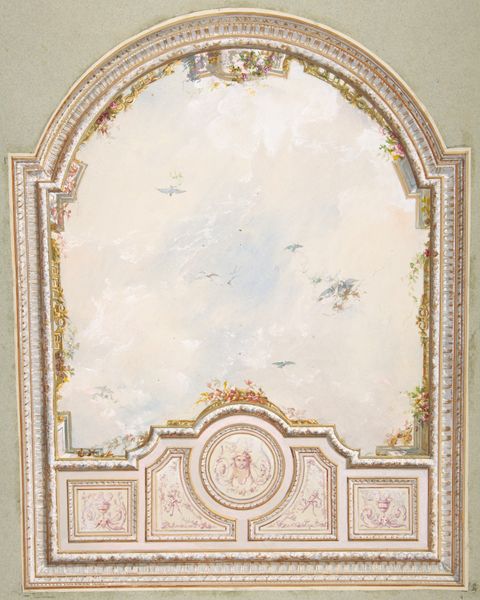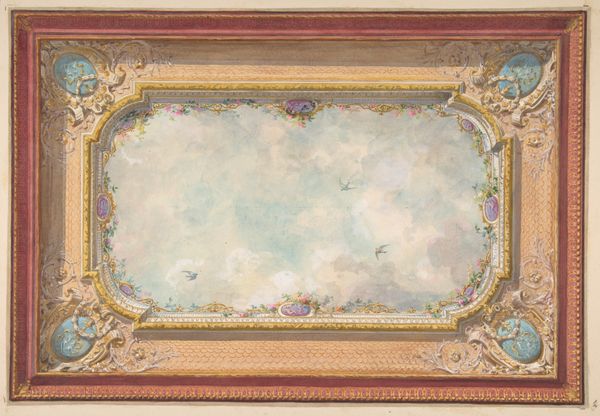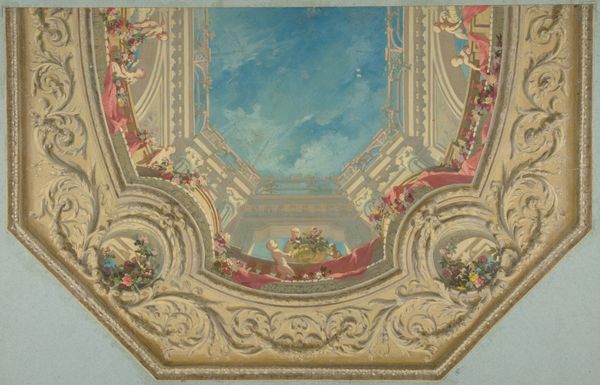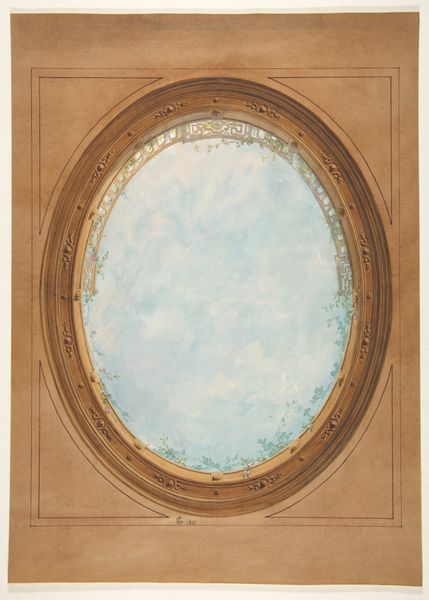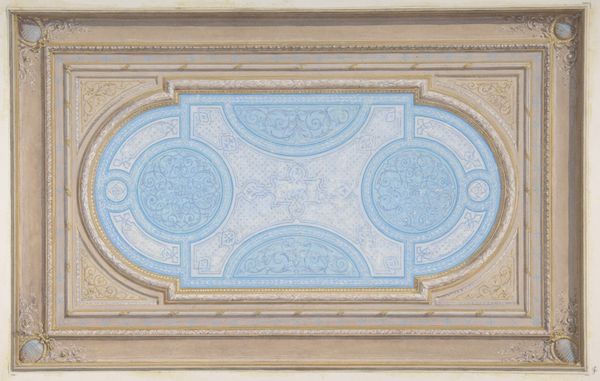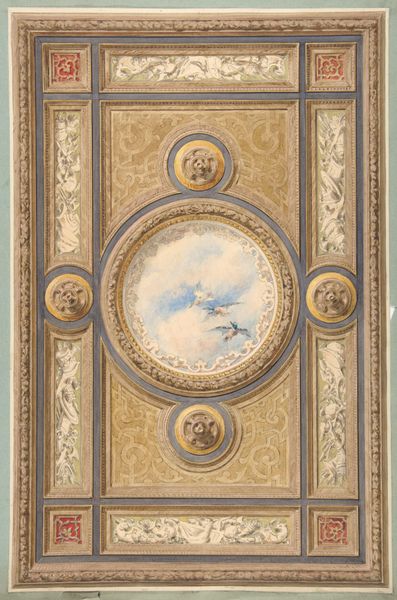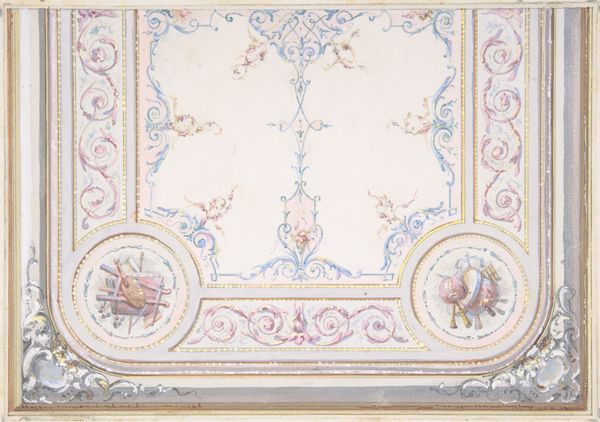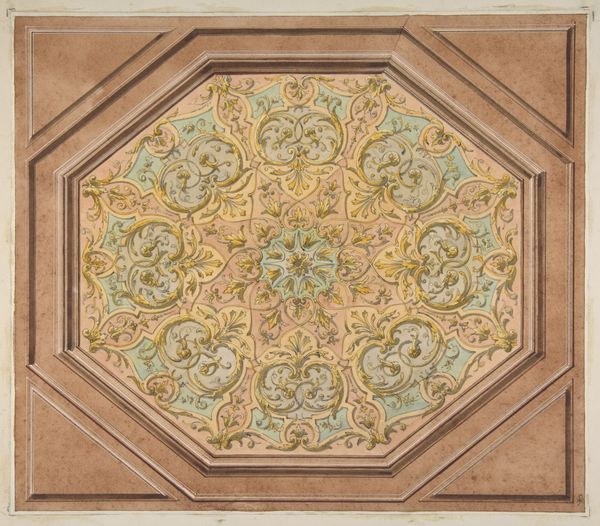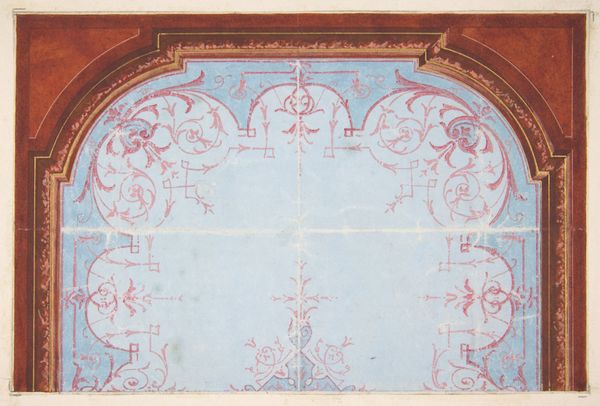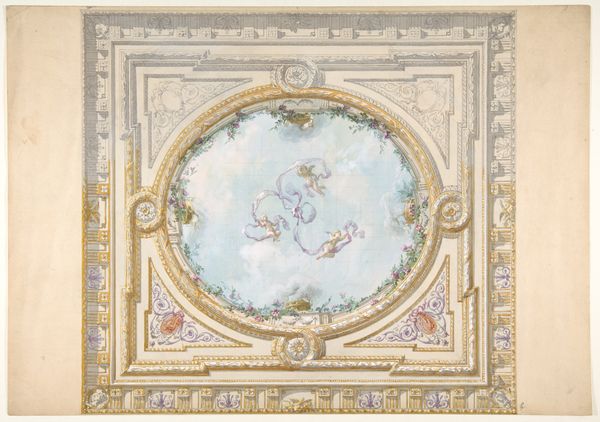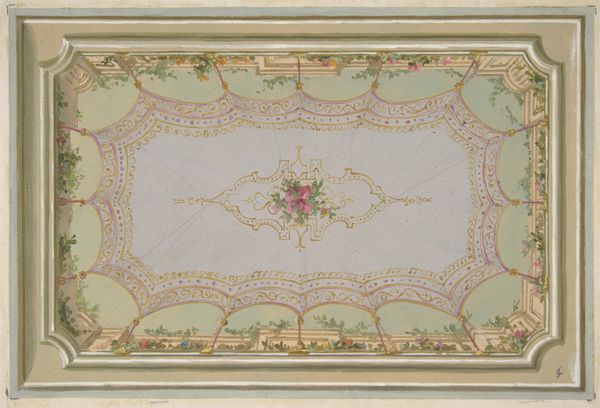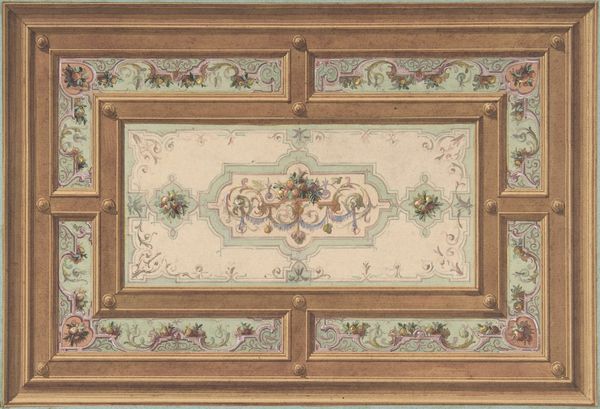
Design for a ceiling of trompe l'oeil sky 1850 - 1900
0:00
0:00
drawing, print, fresco, mural, architecture, pendant
#
drawing
#
neoclassicism
# print
#
landscape
#
fresco
#
traditional architecture
#
trompe-l'oeil
#
academic-art
#
mural
#
watercolor
#
architecture
#
pendant
Copyright: Public Domain
Jules-Edmond-Charles Lachaise designed this trompe l'oeil sky ceiling, but the date remains unknown. It embodies the aspirations of a culture seeking to transcend earthly bounds through art. The design creates meaning through its meticulous detail, evoking a sense of grandeur. It speaks to France's historical obsession with illusion and spectacle. The aristocracy of the time used art and architecture to proclaim their power and status, filling their palaces with paintings and sculpture. This design would create the illusion of limitless space in the beholder. Lachaise references decorative excess and might be viewed as either a celebration of the social order, or, perhaps, as a critique of the institutions of art through hyper-ornamentation. To truly understand this design, we can consider how these interiors functioned as stages for social rituals. By exploring the economic structures that supported such lavish artistic production, we can gain insights into the complex relationship between art, power, and society. We must consider the social conditions that shape artistic production.
Comments
No comments
Be the first to comment and join the conversation on the ultimate creative platform.
